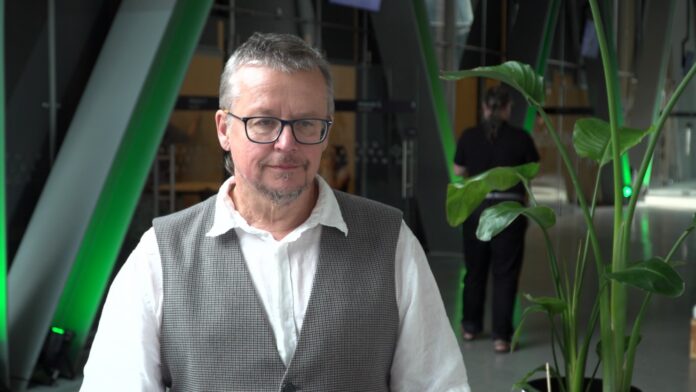Increasingly rare and abundant rainfall as well as extreme weather events pose a threat to crops and agricultural infrastructure. This requires farmers to apply new methods of combating phenomena such as hail or flooding, but also to adapt to EU requirements focused on combating climate change. Both lines of action, as emphasized by experts and farmers, should be supported by the government. Despite threats, Poland will not run out of food in the short term, but it may become more expensive and economically inaccessible for the poorest groups.
“Agriculture is the sector most vulnerable to the effects of climate change, because all factors of agricultural production are modified by climate change, such as the distribution and amount of precipitation or the length of the growing season. If we do not stop them, this may mean a reduction in food security, understood as a reduction in the amount of available food, especially certain products, such as tea, chocolate or wine, but also meat or grain. It will also mean limiting economic access to food, i.e. food will simply be more expensive,” says Dr. Zbigniew Karaczun, an expert of the Climate Coalition and the Warsaw University of Life Sciences (SGGW).
According to a report from the Institute of Public Affairs, “Green Transformation of Polish Agriculture,” 60% of surveyed farmers believe that climate change has a significant impact on the entire sector. One of the two greatest threats posed by climate change is drought, resulting from changes in the distribution and amount of rainfall. Precipitation, as can be seen in the case of Poland, is less frequent, but more abundant over time. This leads to alternating drought and flooding, and temperature rises causes faster evaporation of water, which is also a factor conducive to desertification. The IPA study shows that 42% of surveyed farmers fear drought. The second serious threat is extreme weather events, which are intensifying and occurring more frequently. These include violent hurricane winds, intense hail or torrential rains, which cause losses in both crops and agricultural infrastructure. 33% of those surveyed by the IPA fear these situations.
Another major threat is the physical lack of food. Here too, farmers (33%) often point to climate change as the greatest threat to food security. As Zbigniew Karaczun states, the effects of climate change are already causing grain yields to be about 5-10% lower than they would be without climate change. This means that for at least part of the world’s consumers, food will run out. Poland is a large producer and exporter of food, so a physical lack of food products does not threaten us, but a global increase in prices will make export more profitable for producers than selling on the domestic market, which will raise prices also in Polish stores.
According to a study by Credit Agricole on the food self-sufficiency of EU countries published in spring 2023, Poland achieved the best result among all countries in the community. Our country is self-sufficient in food production in seven out of nine analyzed categories. Only in the categories of “fish and seafood” and “vegetable fats” Poland is not able to satisfy internal demand with domestic production. The second country after Poland, the Netherlands, is self-sufficient in food production in six out of nine analyzed categories. This shows that the structure of agricultural production in Poland is very diversified compared to other EU countries.
Before Polish agriculture stands a great challenge, because it must on the one hand adapt to the effects of climate change, on the other hand take part in its protection. We are a member of the European Union, which, like most countries in the world, wants to be climate neutral, and without action in agriculture this cannot be achieved,” convinces the expert of the Climate Coalition.
“In connection with this, certain directions of production and cultivation techniques will have to be changed, for example we will have to largely move away from plowing in favor of no-till cultivation. We may need to reduce animal production, especially in the case of ruminants and industrial production. But we will also have to change crops in order to adapt them to the effects of climate change. In Poland, we will most likely have to withdraw from potato production, or at least significantly reduce this production.”
According to forecasts, the area of potato crops will decrease by 70%, because this plant on the one hand requires a large amount of water at certain times of its growth, and on the other hand it is rather a cold-loving plant, so the effects of climate change will be negative for it. In this place, crops of heat-loving plants such as corn or grapevines, possibly soybeans or sorghum, may enter.
From the data of the National Agricultural Support Center, it follows that only during the first half of 2023, the value of sales of agri-food products abroad amounted to 25.6 billion euros (PLN 119 billion) and was about 16% higher than in the same period in 2022. At the same time import of agri-food products amounted to 16.4 billion euros (PLN 76 billion) and was 9% higher than a year earlier. Almost three quarters of exports (73%, 18.8 billion euros) went to markets in other EU countries, of which over a third went to Germany (6.4 billion euros). Meat and meat products dominated the structure of the Polish export of agri-food products (of which 42% is poultry), accounting for 19% of the total export value. They were followed by cereals and their products (15%) and tobacco and tobacco products (10%).
“To make Polish agriculture able to cope with the effects of climate change, good agricultural policy is needed. This means active participation of public authority, the state, the government in supporting farmers. On the one hand, we should support farmers so that, for example, orchardists use anti-hail nets as an adaptation to these threats and the increase in the frequency of extreme events, but we should also support farmers in retaining water where it has fallen,” points out Dr. hab. Zbigniew Karaczun.
“However, there is also a huge need to support farmers in implementing agricultural production methods that will serve to protect the climate, support the reduction of greenhouse gas emissions from this sector. This is the role of public authority, the role of the government, to create such a program, to reward farmers for providing ecosystem services, i.e. for taking actions that will serve us all, because they will limit the danger of the worst scenario of climate change.”
Among farmers, there is considerable support for some solutions aimed at protecting the environment and the climate. For example, 80% of those surveyed by the IPA support the development of organic farming. Over 70% support the obligation to ensure animal welfare and care for biodiversity. Two-thirds are in favor of transitioning to renewable energy sources in farms. 62% support the exclusive use of environmentally friendly fertilizers and plant protection products, and 48% – limiting industrial breeding. For comparison, 29% of respondents are in favour of limiting meat production, a larger percentage are against. The degree of implementation of individual actions in their own farms is, however, much lower. As farmers indicate, obstacles to the green transformation of agriculture include high costs and low profitability of agricultural production, income instability, but also complicated climate regulations.


















